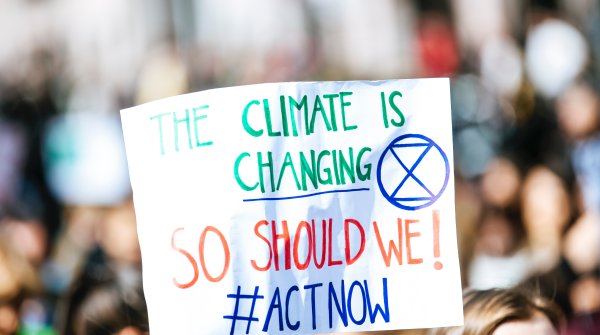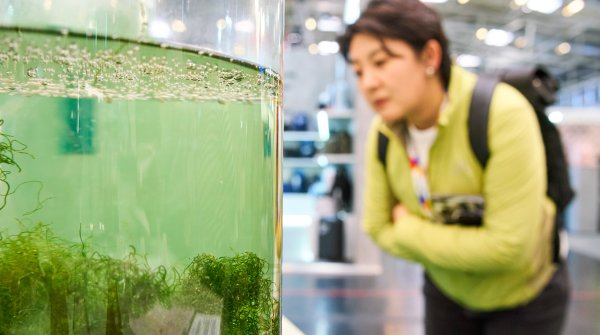In short: the industry needs new KPIs alongside the traditional ones. We have already dealt with this in the first part on outdoor sourcing KPIs.
But the challenges are not just internal to the industry. They affect each and every one of us and the entire economic system. Necessary changes affect sourcing, eco-design, purchasing, production, sales and end-of-life management. The use of chemicals, CO2 emissions and water management must be subordinated to the protection of biodiversity.
Too abstract? Let's consider the following figure: the European Parliament estimates that textile production - especially fast fashion - is responsible for a whopping 20 percent of global environmental pollution.
If biodiversity is to be preserved, it is best to use scientific studies as a basis for strategies, innovations and solutions. They also form the basis for French and European regulations on sustainability, monitoring and transparency. All this is to enforce proper due diligence.
"To combat the negative impact of this phenomenon on the environment, the EU wants to reduce textile waste and increase the life cycle and recycling of textiles. This is part of the plan to achieve a circular economy by 2050." Source: European Parliament, June 2023.
The control of resource management, due diligence, ESG reporting - everything is pushing for more efficiency and transparency so that the impact remains as low as possible.
Greenhouse gases, the water cycle and plastic pollution have the greatest impact on the environment. This affects both the preservation of biodiversity and the health of humans, who can be exposed to more or less hazardous chemicals through their consumption decisions. However, by focusing on the efficient use of resources, the sustainability of products and waste management can be significantly improved.
Some brands have anticipated this global approach, such as Oxbow™, Rip Curl™ or Salomon™. The latter, for example, measure the footprint of their company headquarters in Annecy every year. Others have calculated the footprint of a product as part of a life cycle analysis, such as the INDEX shoe series from Salomon™ or the Standard Expedition Parka from Canada Goose.
Control is achieved through awareness-raising covered by senior management, science integrated into production systems, and traceability and AI tools, of which a responsible and sober performance indicator is an integral part.
"If we can use AI to validate data, highlight inconsistencies and potentially close gaps, CSR managers could focus on working with their partners to optimize the supply chain. By getting involved, they can create real value and make a positive impact." Philipp Mayer, Cofounder of Retraced
The Corporate Sustainability Reporting Directive (CSRD) is a European directive that aims to strengthen and harmonize the disclosure of non-financial information by large companies. It aims to provide a transparent, robust and cost-effective framework for the provision of information, particularly in relation to reporting standards and external data verification.
With this in mind, procurement and purchasing must adhere to twelve overarching and thematic standards, of which performance measurement is an integral part. The most advanced traceability tools are the brands' best allies. They are designed to make the invisible visible by helping to find, manage, verify and secure supplier data at a high level.
In a reverse supply chain process, traceability functions could track and manage waste and fibres, enabling a transparent and comprehensive circular economy. In addition to assessing the business model, the main task of non-financial ESG reports is to present environmental, social and governance aspects in a matrix to determine their role in assessing risks and returns.
A material analysis has already been published on the Decathlon Group website, comparing the brand's requirements with those identified and defined by stakeholders. This work to track risk management and challenges to secure provenance and ownership through collaboration and partnership will be key to adaptation.
"Through the use of technology, Decathlon is following the latest best practices recommended by the European Financial Reporting Advisory Group (EFRAG), the organization responsible for setting the future European reporting standards for sustainability development." Donato Calace, member of the EFRAG working group of CSRD experts
According to this year's the regeneration rising report by creative agency Wundermann Thompson, 83% of respondents from the UK, US and China believe that companies and brands should focus more on making a positive impact rather than causing harm to the planet and its inhabitants.
But how can this management be achieved? And what does this positive approach mean? This is the fine line between paradigm shift, project management and greenwashing. Brands commit to "carbon neutrality" - a claim that will soon be banned in France - and they have to prove it in order to comply with certain regulations or sell their products in certain territories.
For example, Haglof™ is committed to making products more durable and exploring alternative business models. All Birds™ claims to be launching the first net-zero carbon shoe. Certifications and standards such as bluesign® or the Global Organic Textile Standard (GOTS) also promote more sustainable and responsible practices in the textile industry to reduce the impact on water and the environment. Carbon credit schemes are used to reduce carbon emissions. All of these initiatives will be positive if they help make a difference between offsetting, capturing, reducing and restricting.
"90 percent of biodiversity loss is due to the extraction and processing of natural resources, and many of the most effective solutions involve new ways of producing, consuming and handling materials in a circular economy." Source: the nordic innovation
According to the organization CEC (Convention des entreprises pour le climat), the regenerative economy consists of business models that go beyond impact reduction or even the goal of "net zero". They aim to regenerate entire ecosystems by relying on new and expanded forms of collaboration between actors in a given territory.
Regenerative fashion is a concept that is emerging in the fashion industry and is based on a holistic approach that aims to repair and revitalize natural and social systems. It focuses on the impact on the environment and communities along the entire life cycle of garments, from design and production to use and disposal. These principles are the same as for regenerative agriculture.
The challenges and impacts of this system relate to ecological design, transparency and the restoration of ecosystems. It aims to transform the fashion industry into a positive driver of change by fostering creativity and innovation and creating closer connections between consumers, designers and communities.
Nevertheless, regenerative concepts should be treated with caution in sourcing and production. This is because to achieve their goals, strong, verifiable commitments to impact reduction and production must be imposed, including clear measures in favour of biodiversity. This very committed system is of particular interest to per se sustainable brands such as Picture Organic™ or brands capable of profound change, such as Fusalp™, both of which are involved in the CEC Alpes program. This is also the direction that the Swedish brand Haglofs™ seems to be pursuing.
Although water directly affects planetary boundaries with the acidification of the oceans, the freshwater cycle and the balance of the biosphere, which also contains water vapour, it receives little attention.
According to UNESCO, water has multiple values and benefits. But unlike most other resources, it is extremely difficult to determine its "real" value. This concerns its use in production processes as well as pollution and waste.
According to the international organization Fashion Revolution™, in the worst-case scenarios, only 80% of the dyes remain on the garment, while the remaining 20% are released during rinsing. Every year, no less than 40,000 to 50,000 tons of dye are released into rivers. This waste contains heavy metals and perfluorinated compounds (PFCs), which are used to increase colour depth as well as non-iron and waterproof properties.
Perfluorooctanoic acid (PFOA) has been banned in Norway for several years. Nevertheless, chemicals are indispensable in the textile industry. Fortunately, there are circular pigments such as Dye Recycle™. Approaches for mineral, microbial or bio-based pigments, and PFC-free solutions are available from Goretex™ or Singtex™.
"The next big health scandal will be about the toxicity of garments." Audrey Millet, historian and researcher in the textile industry, in the book "Noir de la mode."
According to ADEME, the equivalent of 50 billion plastic bottles are thrown into the sea every year. Most of these end up as tiny pieces of waste known as "mermaid tears". The outdoor and sports industry contributes directly to these problems as polyester, a petroleum-derived material, is the most widely used textile material in the world.
There is an urgent need to address this challenge in the outdoor products sector. How can we address the risks associated with the use of these resources and the practice of outdoor sports? The Vaude brand is working with UPM Biochemicals to find a solution for outdoor apparel made with bio-based chemicals.
"The fashion industry currently accounts for about 20% of global industrial wastewater and 8% of global greenhouse gas emissions." Source: United Nations
To define performance with restraint, leadership and systematic criteria, harmonization of global supply chain management is necessary. This would allow the OutDoor industry to move forward into a stable and sustainable system, with more accurate data, less waste and overproduction. This industry belongs to all of us, and together we should ensure that digital and responsible know-how becomes the norm.
There is no perfect product or process, but together brands, consultants, yarn manufacturers and fabric suppliers can create a more transparent, efficient and sustainable sourcing process. A more sustainable supply chain is about performance and requires collaboration between different areas such as sourcing, purchasing, finance, marketing, logistics, supply and many more.
It is up to all of us to make our contribution. And new ideas are more than welcome.
1. How can the sports and outdoor industry become more sustainable?
The industry needs to focus on traceability, positive resource management, a regenerative business mode, and harmonization of systems to reduce environmental impacts.
2. What are the environmental impacts of textile production?
Textile production, especially Fast Fashion, contributes to 20% of global environmental pollution, according to the European Parliament. Chemical use, CO2 emissions, and water management need improvement.
3. What is the Corporate Sustainability Reporting Directive (CSRD)?
The CSRD is a European directive requiring large companies to disclose non-financial information. It promotes transparency and cost-effective information provision.
4. How does traceability (according to CSRD) promote sustainability?
Traceability tools help brands find, manage, and verify supplier data. This enables a transparent circular economy and helps reduce environmental impacts.
5. What does positive resource management mean?
Brands focus on efficient resource use, certifications like bluesign®, and standards like GOTS to promote more sustainable practices. Carbon credit systems are used to reduce emissions.
6. What role does water and chemistry play in the textile industry?
Water circulation and chemical pollution are significant environmental burdens. Initiatives like Dye Recycle™ and PFC-free solutions at Goretex™ are approaches to reduce environmental impacts
7. How can the outdoor industry stop the plastic pollution?
Brands like Vaude are seeking solutions with bio-based chemicals to reduce polyester use. Promoting sustainable practices is crucial to minimize environmental impacts.
- ISPO awards
- Mountain sports
- Bike
- Design
- Retail
- Fitness
- Health
- ISPO Job Market
- ISPO Munich
- ISPO Shanghai
- Running
- Brands
- Sustainability
- Olympia
- OutDoor
- Promotion
- Sports Business
- ISPO Textrends
- Triathlon
- Water sports
- Winter sports
- eSports
- SportsTech
- OutDoor by ISPO
- Heroes
- Transformation
- Sport Fashion
- Urban Culture
- Challenges of a CEO
- Trade fairs
- Sports
- Find the Balance
- Product reviews
- Newsletter Exclusive Area
- Magazine










